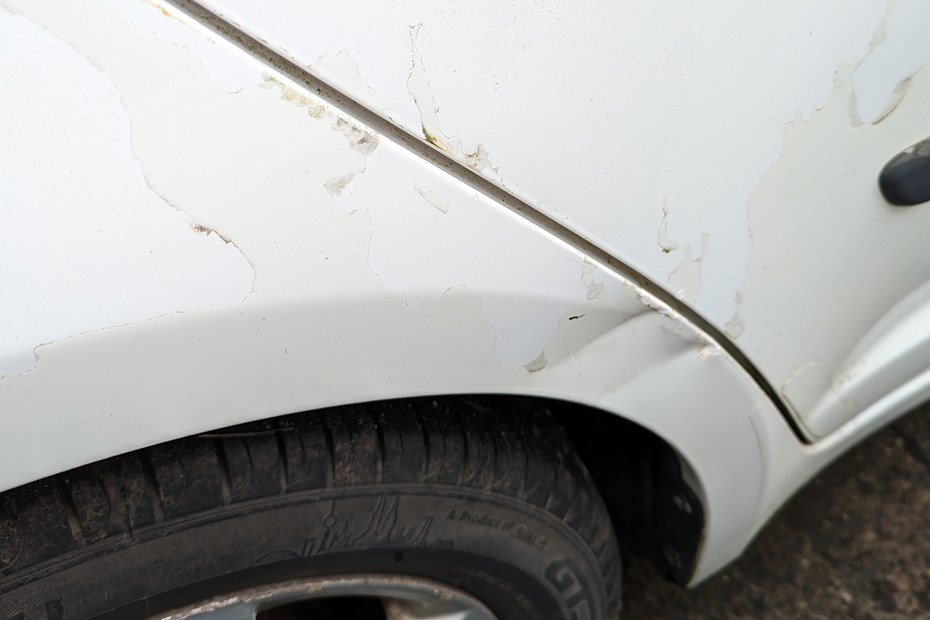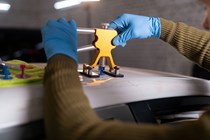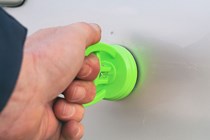Small dents are an annoying part of modern life that can spoil the lines of your car and potentially devaluing it, too. The good news is you do not always need a professional to put things right. With a little time, some basic tools and the right know-how, it is perfectly possible to tackle small dents yourself with basic tools.
It is easier than you might think once you break the job down into simple steps. Over the years, I have fixed a few dents on my own cars (with varying degrees of success, it has to be said) and, with a bit of patience, the results can be surprisingly good. Whether it is a door ding from a supermarket car park or a small knock on a bumper, this guide will help you bring your car’s panels back to their best.
Can I fix a dent in my car at home?
You absolutely can – even I can! If the dent is small, shallow and the paint is not badly damaged, it is well within reach for most people with a bit of care. I have done this myself a few times, and once you get your head around it, it is not nearly as daunting as it sounds. It is worth saying that if the metal is badly creased or the paint is cracked, you might want to consider professional help.
Generally, if you can run your hand over the dent and it feels smooth without sharp folds, you have a good candidate for DIY repair. It is better to have realistic expectations though. You might not always achieve a completely invisible fix, but you can definitely improve the appearance and stop the damage getting worse.
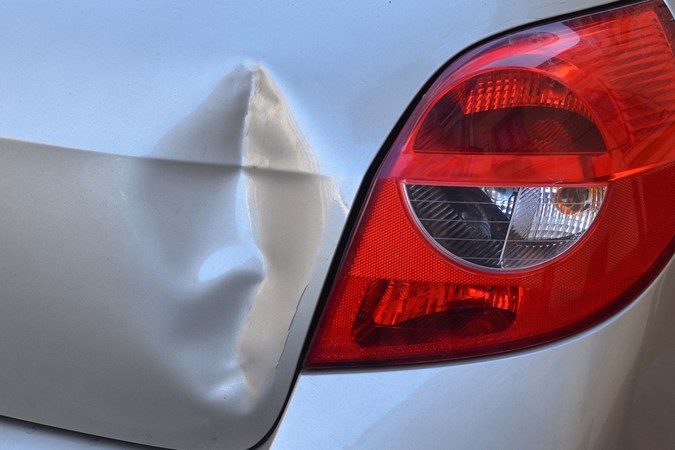
What tools do I need to fix a dent in my car?
You do not need a fully kitted-out garage, but a few bits of equipment will make the job easier. Some dents will pop out with little more than a plunger, while others might need more specialised tools like a dent pulling hammer or repair kit. Heating and cooling equipment such as a hairdryer and compressed air can also make a difference.
Here is a basic kit list to give yourself the best chance of success:
- A clean car wash brush to prep the area
- A suction cup dent puller
- A hairdryer or heat gun
- Compressed air
- A dent pulling hammer
- A dent repair kit
- Body filler and primer for deeper repairs
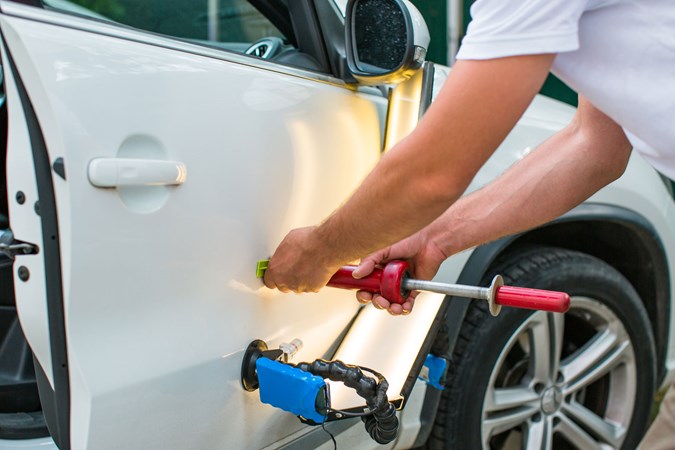
How to get a dent out of a car
There are several different ways you can remove dents at home, ranging from using basic garage tools to professional car dent removers. If you’re happy with tackling the dent and it’s in an easily accessed and repairable spot, here’s what you could use to fix it.
1. Push out the dent

If you can get behind the dent, sometimes you can simply push it back out. I have had decent success with this method on boot lids and door panels. Warm the metal slightly with a hairdryer to make it more flexible, then use your thumbs or a soft tool to gently push from behind. It takes a little feel, but it can be surprisingly effective.
Make sure you apply even pressure and work slowly, as pushing too hard in one spot can cause the metal to stretch. If the dent is on a hard-to-reach area, you might need to remove an interior trim panel first. A bit fiddly perhaps, but often well worth the effort for a clean fix.
2. Use a plunger, suction cup or vacuum

This one feels a bit old-school, but it works – trust me on that. A sink plunger, or better still a purpose-made suction cup, can pull out a shallow dent nicely. Wet the area and the plunger for the best grip, then give it a few sharp tugs. It is a quick and satisfying fix when it works.
Suction pullers are best suited to wide, shallow dents, such as those found on car doors or bonnets. They will not work miracles on dents with sharp edges or complex curves, but for supermarket knocks and similar minor damage, they are well worth a try.
3. Use a dent-pulling hammer to remove the dent

For dents that are a bit more stubborn, a dent pulling hammer can help. These kits glue a tab onto the dent and then use a sliding hammer action to tease the metal back into shape. They take a bit more patience to get right, but the results can be very good once you get the hang of it.
The key is to work slowly and carefully. It is tempting to go at it with enthusiasm, but small, measured pulls will give you a much better chance of restoring the original shape without making things worse. I have used these kits myself and, after a bit of trial and error, they can produce very satisfying results.
4. Use heat to remove the dent

If you’ve got a dent in a plastic bumper, you can sometimes easily remove it by pouring boiling water over it to make it more flexible, and then pop the dent out from behind. Cool it off afterwards and the job is done.
You can use temperature change to remove dents in both plastic and metal surfaces, too. Start by heating the dent with a hair drier, holding it at a sensible distance as to avoid damaging the paint. Once it’s hot, use a can of compressed air to spray the dent. This will rapidly cool the panel, causing it to contract and pop the dent out. You can also try using chilled water on the panel if you don’t have compressed air to hand.
5. Using hot glue and wooden dowels
You can create your own inexpensive dent puller using wooden dowels, some screws and a glue gun. Firstly, test the glue gun and glue on an inconspicuous area of your car’s bodywork and make sure you can remove it easily with, say, some rubbing alcohol from a dropper bottle. A small amount applied to the glue should allow you to easily pull the hot glue off the panel without damaging the paint.
Afterwards, make a T-shaped handle or two out of a section of dowel and some screws. Use the hot glue gun to affix the dowels to or around the dented area and, once the glue has dried, use the dowels to manipulate and pull on the dent. Once done, you can use a hair drier or heat gun to release the glue. Afterwards, use rubbing alcohol or similar to quickly clean up the glue, then wipe the panel down and polish it up. Be very careful, though, as it’s easy to damage the paint with glue-removing chemicals such as acetone.
6. Use a dent repair kit

Modern dent repair kits bundle together all the tools you are likely to need. These kits usually come with glue guns, pulling tabs, and bridge tools to help you apply steady, even pressure. If you want a method that feels more professional without spending a fortune, a kit is the way to go.
They do take a little practice, especially when lining everything up properly, but most kits come with good instructions. After a couple of attempts, you will feel much more confident, and you might even be surprised by how much you can improve the appearance of your car.
7. Fill and repair the dent
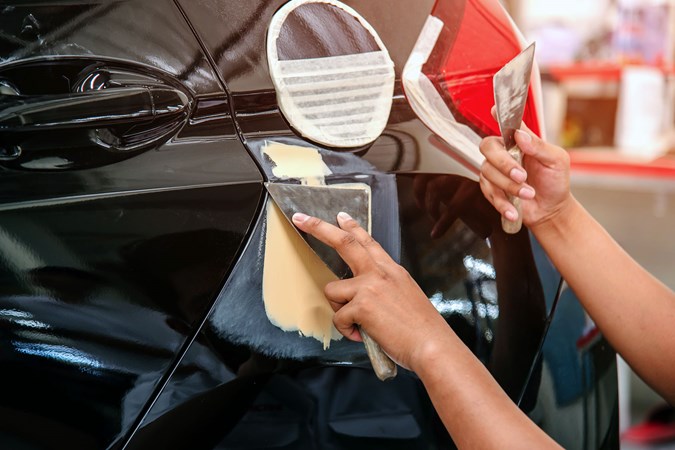
When the dent just will not shift, filling might be the answer. This sounds daunting, but if you take it step by step, it is manageable. Sand the dent, apply body filler, and then smooth it out once it hardens. After that, you prime and paint the area carefully.
If you are patient and pay attention to the finishing process, you can achieve results that are very close to professional. Our paint protection guide has some great tips on how to keep your fresh repair looking good over time.
How much does it cost for a professional job?
If DIY sounds a bit much – and let’s face it, we’re all time poor these days – a professional ‘smart’ dent removal typically starts around £50 for small repairs but can quickly rise into the hundreds for larger damage. It is money well spent if your car is relatively new or valuable, or if you are worried about resale value.
If the damage is severe enough to involve insurance claims, you might want to understand what Cat N means and when buying a write-off might make sense. For smaller dents, though, DIY is often the better value route.

Conclusion: give it go, you’ll be surprised!
Small dents are one of those jobs that seem daunting until you give them a go. With the right tools and a bit of patience, you can fix them yourself and save a decent chunk of money too. It is a job that feels genuinely rewarding once you see the results, and one more skill to add to your DIY toolkit.
Of course, there will always be some dents that are better left to the professionals, especially where there is significant paint damage or complex panel shapes. But for everyday dings and minor knocks, giving it a go yourself can be well worth the effort. Even if you do not get a perfect showroom finish, you will often end up with a much neater, tidier looking car – and I’m all for that.
At the very least, you will understand the process better next time a dent appears, making it far less overwhelming to tackle in future.
FAQs: What you need to know about fixing small dents
-
Can you remove car dents yourself?
Yes, you can, and it is easier than you might expect with the right approach. Small dents, especially ones where the paint has not cracked, can often be pulled, pushed, or coaxed back into place without too much trouble.
If you take your time and follow the right method for your type of dent, you can get a very decent finish at home. It is worth starting with the least invasive techniques first, like suction cups or gentle heat, before moving on to anything more involved. -
Do suction cup dent pullers really work?
They do, particularly for dents that are broad and shallow, like those you might get from a supermarket car park encounter. Suction cup dent pullers create a vacuum that pulls the panel back into shape, often with surprisingly good results.
However, they are less effective on sharp creases or dents on very curved areas. If the damage is too deep or too tight, you might need to step up to a dent repair kit or professional help to finish the job properly. -
Does pouring hot water on a dent really fix it?
Sometimes it can, especially on plastic panels like bumpers, where the heat softens the material enough for it to pop back into place. Pouring very hot water over the dent and then pushing gently from behind can sometimes make the dent disappear.
It is not a guaranteed fix though, and it is less effective on metal panels where the material is more rigid. Even if it does not fully fix the problem, it is a very low-risk first step worth trying before moving on to more involved methods. -
How to fix a small dent in a car yourself?
Start by cleaning the area thoroughly so you can clearly see the dent and avoid causing any further damage while working. Depending on the dent's size and shape, you can try using a plunger, a suction cup puller, or a combination of heat and cooling to encourage the panel back into place.
If those basic methods do not work, a dent repair kit can offer a more targeted approach with better control. Just take your time, follow the kit’s instructions carefully, and remember that a little patience usually leads to the best results.
Just so you know, we may receive a commission or other compensation from the links on this website - read why you should trust us.


